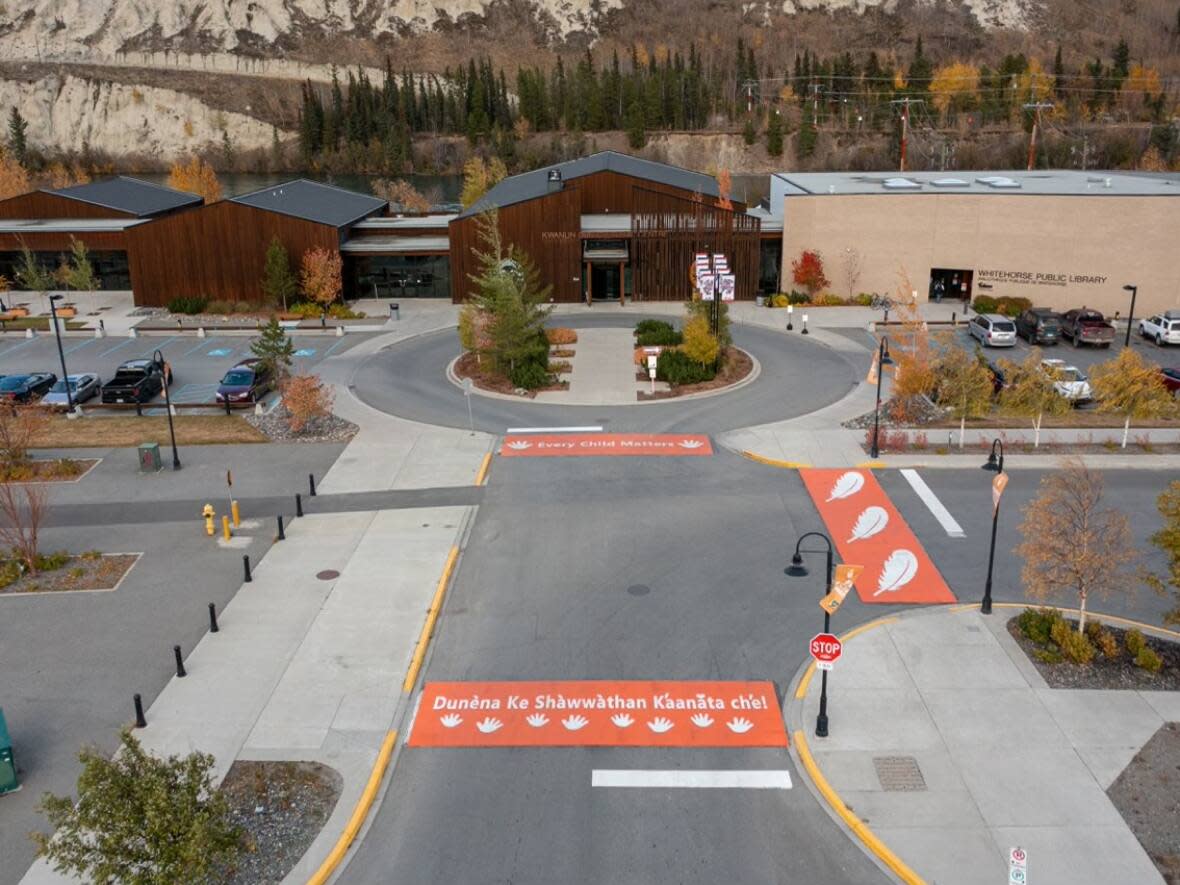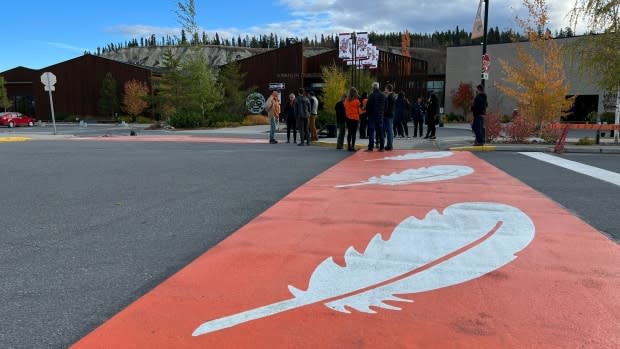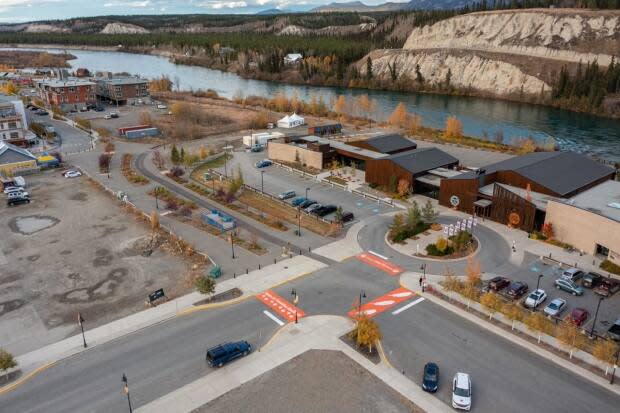Whitehorse crosswalks mark National Day for Truth and Reconciliation

To commemorate National Day for Truth and Reconciliation and Orange Shirt Day, the Kwanlin Dün First Nation, Ta'an Kwäch'än Council, Council of Yukon First Nations, and the City of Whitehorse formally acknowledged Whitehorse's new crosswalks on Friday morning.
The three orange-and-white strips are at the intersection of Black and Front Streets, directly in front of the Kwanlin Dün Cultural Centre.
Doris Bill, chief of the Kwanlin Dun First Nation, said for her, as a residential school survivor, this day and the crosswalks are a form of reflection and remembrance.
"For us, it's really important that we raise awareness around our history and our past and what has happened to us," she said. "It's important that people remember and acknowledge the lives that were lost and acknowledge our history and what we've been through. I think these crosswalks are a beautiful reminder of that."
Two out of the three crosswalks proclaim "Every Child Matters" in English and Southern Tutchone with child-like hand prints to represent the children who went to residential school.

Teagyn Vallevand (Aatagwéix'i) is a citizen of the Kwanlin Dün First Nation and the artist behind the crosswalks' designs.
She said having the saying "Every Child Matters" in Southern Tutchone was extremely important to respect the traditional territory. Also, the accent on the fourth word has a unique twist.
"We made one of the accents a heart to add a little bit of special healing," said Vallevand.
The third strip shows three white eagle feathers.

"[Feathers] mean medicine, healing and the connection to the creator," said Vallevand.
Vallevand also explained each feather represents different stages in life: the children who are the future; the elders that bring knowledge, tradition and history; and the third feather is adults who are usually the protectors of the community.
Ta'an Kwäch'än Council Chief Amanda Leas said the crosswalks' designs and partnership between governments took months of planning and coordination to deliver one main goal: education.
"For many many years, children didn't matter. Indigenous children did not matter," she said.
"We can't erase our history, but all we can do is educate the future generations of what happened and do better. So, that's really the goal out here."
During Friday's unveiling, Whitehorse Mayor Laura Cabott said these permanent crosswalks acknowledge the tragic past and the legacy of residential schools, but also a reminder that "reconciliation is something we can all do together."
"It is a reminder that reconciliation can and is happening everyday. It is a reminder that we are here, we are listening and we are actively striving to do better," said Cabott.


 Yahoo Movies
Yahoo Movies 
